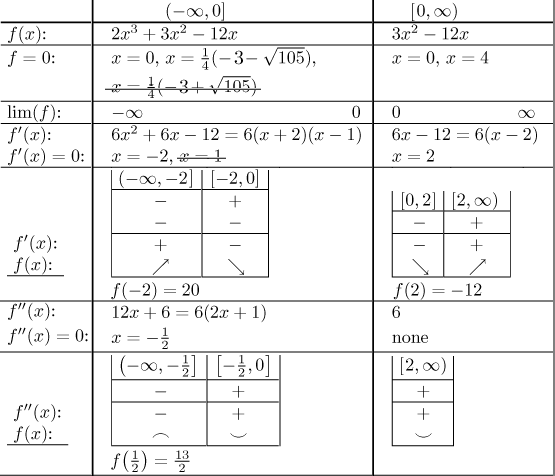Problem: Sketch the graph of the function
![]()
Solution: We will use the procedure as outlined in Overview of graphing in Methods Survey - Graphing.
Step 1. The domain of this function is the whole real line, the
function is continuous there. Since it is a polynomial with both even and odd
powers, we suspect that it is not symmetric. We try one couple: For instance,
Before we proceed to intercepts, we need to get rid of the absolute value.
![]()
The x-intercept:
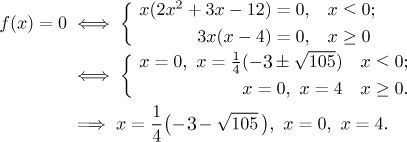
The two ugly roots in the first alternative are approximately −3.3 and 1.8,
so we disregarded the latter, since that particular equation is relevant
only for non-positive numbers. Note that
Step 2. We find limits at endpoints of the interval given by the domain.

Asymptotes: Since the function is continuous on the whole real line, there cannot be vertical asymptotes. Because limits at negative infinity and infinity diverge, there are no horizontal asymptotes there, but the limits exist and therefore there is a chance for oblique asymptotes. We will use the appropriate algorithm.
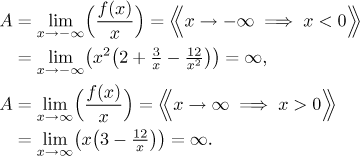
The limit for A diverged at both negative and positive infinity, therefore there are no oblique asymptotes there.
Step 3. We find the derivative and use it to determine monotonicity and local extrema. We will use the usual rules for every alternative, but note that they work only on open sets.
![]()
Critical points: There is one possible point in the domain where the
derivative does not exist; we are not sure, but we need not decide for now,
we will include

The number
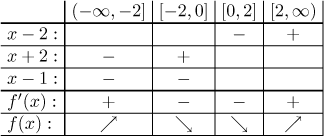
We have adjacent intervals of equal monotonicity, and since f is
continuous at the connecting point 0, we know that they can be connected.
The conclusion is that f is increasing on
Local extrema: The given function has a local maximum
We did not really need to know whether the derivative at 0 exists, so we skipped calculating one-sided derivatives, but their knowledge will help when we sketch the graph, so we include the calculation here to complete the part concerning the first derivative. We find them using a limit, see the appropriate theorem in Derivative and limit in Theory - MVT.

Surprisingly, there is a derivative at the connecting point,
Step 4. We find the second derivative and use it to determine concavity.
![]()
Dividing points: There is one point where the second derivative might not
exist; since we do not really need to know, we save time by not exploring it
and simply include
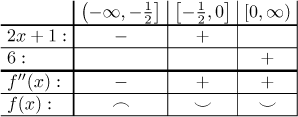
The conclusion is that f is concave down on
Inflection points: There is one for sure,
Step 5. Now we put it all together. First we put all points and limit trends that we obtained above into a picture. This will be the skeleton on which we will hang the function. In order to save room we will change the scale on the y-axis.
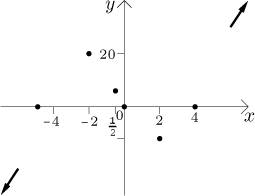
To see the shape of the graph better we combine the two tables above.

Now we are ready to sketch the graph.

Remark: When working with functions given by cases, we split the real line into several regions according to its definition and then do the algorithm several times, in each region, and in each of them we disregard results that are outside that particular region. The above calculations can be (briefly) expressed like this.
